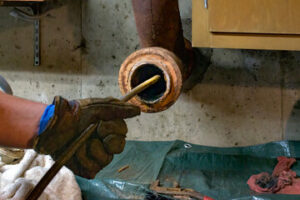Virtual Urgent Care allows patients to consult with a provider via video conference from the comfort of home for non-life threatening issues. It is available on demand for adult and pediatric patients.

JetMED Phoenix -Virtual Urgent Care Phoenix is a way for you to meet with a doctor through a video conference on your smartphone, tablet or computer. It’s used for non-life-threatening illnesses and injuries, such as a sore throat, earache, stomach pain, or allergies.
To participate in a video visit, you’ll need to log into the Connect app on your mobile device or desktop. Then, you’ll be automatically directed to a virtual waiting room. When you’re ready, click “Start Visit” to begin your session.
During your appointment, the doctor will ask you about your symptoms and medical history and may recommend medication or other treatment options. You can expect to talk with your provider for about 10 minutes. It’s helpful to have a pen and paper nearby so you can write down any questions or concerns you might have. If possible, you should also weigh yourself and take your blood pressure (if you have the equipment) before the call begins.
A telehealth visit allows you to receive care without leaving home or work, and it can be less stressful than navigating busy doctor’s office traffic or waiting at a clinic. But, it’s important to remember that it cannot replace in-person visits with your physician. It’s especially important to seek in-person care if you have a life-threatening illness or injury, like chest pain or trouble breathing. If you’re experiencing a life-threatening condition, please dial 911 immediately.
When you participate in a telehealth visit, it’s important to choose a quiet, well-lit space and make sure your camera is clear. It’s also a good idea to have a friend or family member on hand, so they can help you raise your voice and ask any questions you might have. They can also take notes for you, if needed.
You can also save time by downloading the Symptom Checker app or filling out an e-visit form and get a diagnosis right away. You’ll be matched with the next available doctor to speak with, and you can even request a prescription or discharge instructions from your healthcare provider through the app. Your care notes will be securely messaged straight into your doctor’s electronic medical records system, where they can be shared with the rest of your healthcare team.
How does a telehealth visit work?
If you have an urgent medical question, such as a headache, rash, or sore throat, you can use your phone to connect with a healthcare provider through a video consultation. You can also receive a prescription through telehealth, making it easy to get the care you need without having to make an appointment or travel to a clinic.
You can schedule a virtual visit directly on your MyChart website or app. Simply log in to your account, click Menu, and select 24/7 Urgent Care. You can also access telehealth from a computer with internet browser, or through a tablet or smartphone using a free, simple-to-use telehealth app.
When you schedule your virtual urgent care appointment, you will be prompted to choose an available time slot or clinician, and answer questions about your symptoms. You can also provide information about your primary care physician or request that the healthcare provider send a report to your doctor. Depending on your insurance plan, you may have to pay for a telehealth visit out of pocket or the provider may bill your insurance directly.
Before your scheduled telehealth appointment, it’s important to prepare for the call by ensuring that you have a stable Internet connection and a good quality headset. You should also be in a quiet place where you will be able to speak freely and can hear your healthcare provider clearly. Additionally, you should avoid eating or drinking during your visit, and make sure that any pets or children in the home will not distract you.
During the appointment, you will discuss your symptoms and medical history with the healthcare provider. Then, the provider will evaluate your condition and offer a treatment plan. In most cases, the health care provider will also recommend that you come in for further testing or an exam at one of our clinics.
In addition to providing care for your health concerns, telehealth visits can reduce the stress of coordinating work and family schedules to see your regular healthcare provider. It can also save you the hassle of dealing with traffic or finding a babysitter to care for your children while you go to your urgent care appointment.
Can I receive a prescription from a telehealth visit?
Virtual appointments, sometimes referred to as telehealth visits or telemedicine appointments, can be used for a wide range of health issues. These types of appointments allow you to meet with your doctor or nurse over a video conference from your phone, tablet, or computer. You can ask for prescription refills or schedule follow-up care during your telehealth visit, and your provider may also share your lab or imaging test results with you.
You can get a prescription from a telehealth appointment, but it depends on your condition and the provider. You’ll need to be able to communicate your symptoms and discuss your treatment options with the provider. They will evaluate your condition and prescribe a medication that fits your needs. You can then use your favorite pharmacy to get the prescription filled, or they may send it to you directly.
If you need a prescription for a controlled substance, talk to your provider about whether or not they can prescribe it via telehealth. Many telehealth providers only offer online prescriptions for non-controlled substances.
Some telehealth services require you to pay upfront and others will bill your insurance. You’ll need to check with your insurance company about telehealth coverage before you make an appointment. Some telehealth providers are in-network with your insurance plan, so you can use them without paying out-of-pocket. Other telehealth services are not covered by insurance, so you’ll need to pay out-of-pocket for your visit.
During your telehealth visit, you’ll be asked to fill out an intake form that includes information about your symptoms and medical history. You’ll be able to see the doctor on your computer, smartphone, or tablet, and they will ask you questions to understand your symptoms and determine the best course of action. The visit will usually last about 15 minutes.
Virtual Urgent Care is available through the NYP Connect app for iOS and Android devices. This service is not intended to replace your primary care physician or in-person urgent care visits, and should only be used when you are experiencing a non-life-threatening medical issue that needs attention. If you are having chest pain, difficulty breathing, or significant bleeding, head to an emergency room or call 911.
What are the benefits of a telehealth visit?
When you have a medical issue that doesn’t need to be addressed at an emergency room, telehealth offers you convenient and accessible care from your home. Using video or phone, you can connect with an NYP health care provider to talk about your symptoms, receive a diagnosis and get a treatment plan in minutes.
The benefits of a telehealth visit include increased convenience, access and affordability. Virtual visits provide the flexibility to see a health care provider without having to leave home and can be more affordable than an in-person office visit because you don’t have to pay for parking or other costs.
In addition, a virtual visit allows for one-on-one time with your healthcare provider. It also can reduce wait times and avoid the need to travel to an urgent care clinic or hospital emergency room.
During a telehealth visit, you can be assured that your privacy is protected as NYP follows the Health Insurance Portability and Accountability Act (HIPAA). All communication during the virtual visit is secure and private and can only be seen by the healthcare provider. NYP’s telehealth provider team has been carefully selected and trained to ensure the highest quality of service.
Pediatric Virtual Urgent Care is helpful for sick children who don’t need to be taken to the emergency room, such as for a cold or stomachache. The child can be seen in their own home, where they are more comfortable and can be more easily followed up with by the pediatric emergency medicine physician.
Another benefit is that the telehealth visit can be linked to your existing Sharp MyChart account. Your healthcare provider will be able to view your medical records during the visit, which can help with diagnosis and treatment. Then, following the visit, a summary of the visit is sent to MyChart and an alert is sent to your primary care doctor who can follow up with you if necessary. Additionally, you can use a credit card to pay for your visit, which may be Health Savings or Flexible Spending Account eligible. Please note, that a telehealth visit should never replace an in-person visit with your primary care doctor or emergency department for life-threatening conditions such as chest pain, trouble breathing and severe bleeding.
